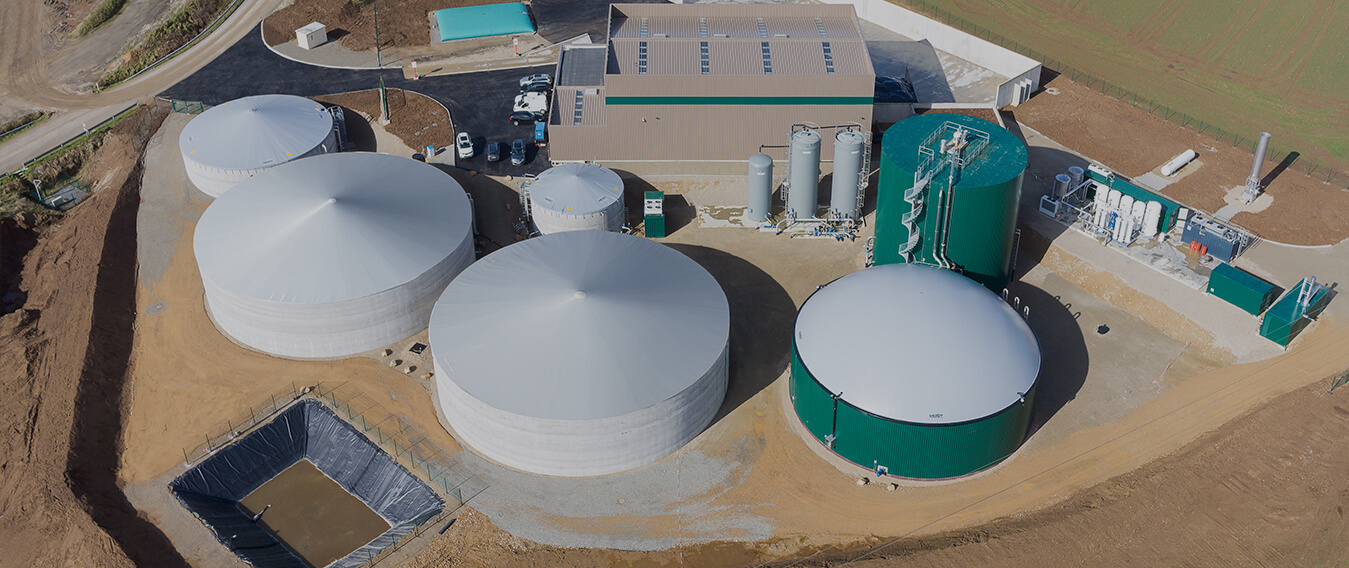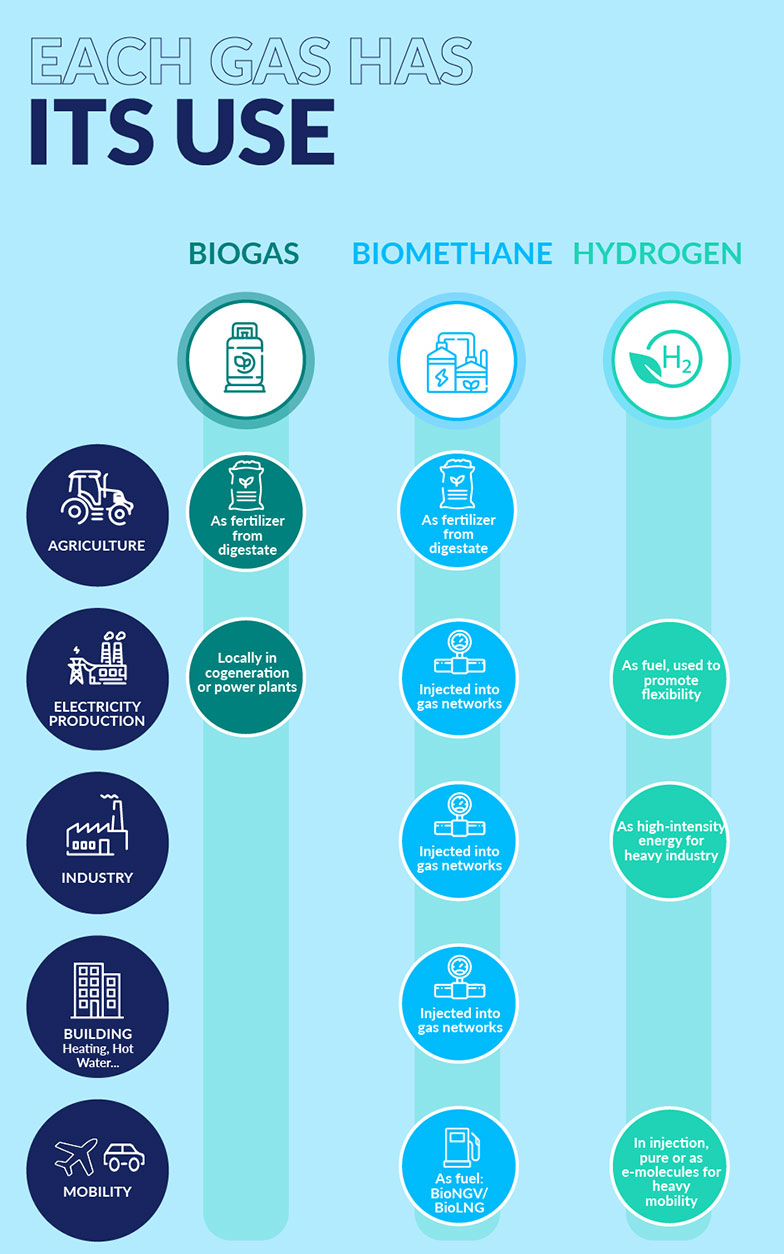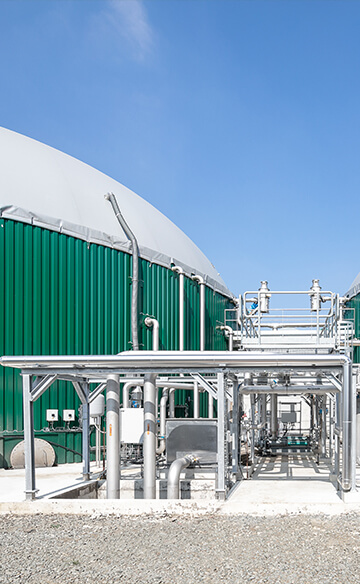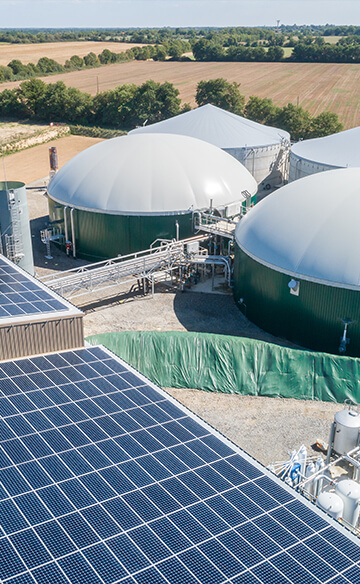What is green gas or renewable gas?
Biomethane, synthetic methane, renewable hydrogen, and e-fuels. These gases are produced from various types of waste or renewable electricity.
There are several types of renewable gas:
Biomethane
- Derived from the methanization of biodegradable waste, biomethane comes from purifying this biogas which is then reinjected into the network.
Syngas
- Syngas makes it possible to use inputs that complement those of biomethane. It is obtained through the pyrogasification of solid waste or the hydrogenation of liquid waste.
Hydrogen
- Mainly used to decarbonize industry and heavy mobility, hydrogen makes it possible to fully exploit the capacities of variable renewable energies by converting them into a storable form.
What are the advantages of renewable gas?
Environmental advantages
- They emit eight times less CO2 than natural gas, making them an ideal transition energy.
- They facilitate decarbonization for households and industry
- They contribute to a circular economy by recycling waste.
Economic advantages
- Most of them are compatible with existing gas infrastructures.
Societal benefits
- They contribute to regional energy independence and energy security
- They stimulate the local economy by creating jobs that cannot be relocated.
How to produce low-carbon gas?
There are several ways of producing green gas.
Methanization
Organic waste is sorted, mixed, and placed into a methanizer, where it is heated and stirred. As it ferments, bacteria transform it into biogas.
To make the biogas compatible with natural gas, it must be purified (i.e., components other than CH4 must be removed).
Several techniques can be used to separate carbon dioxide (CO2) from methane to obtain pure biomethane, such as acid compound absorption, membranes, or cryogenics. Once purified, it will then be odorized for injection into gas networks.
Discover how biogas is produced through methanization:






